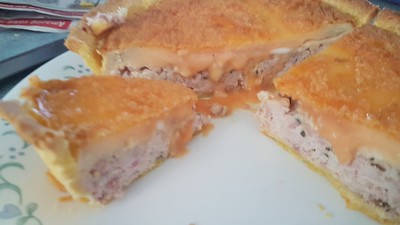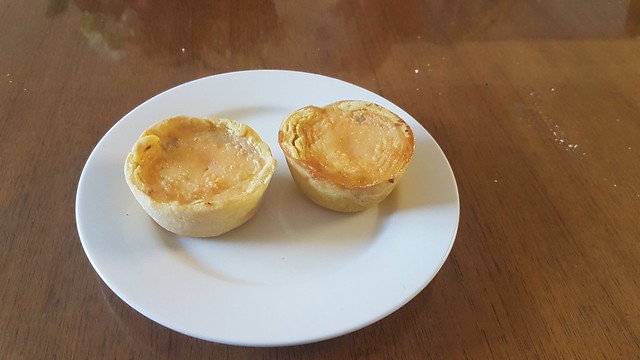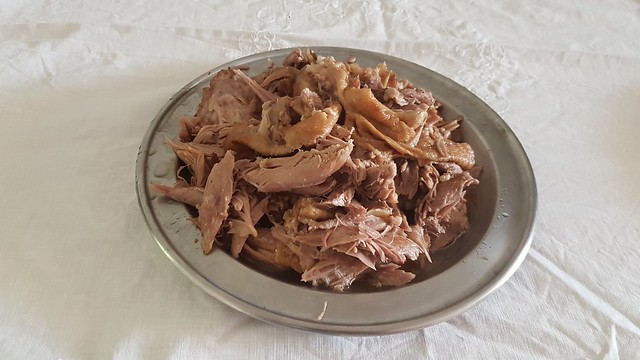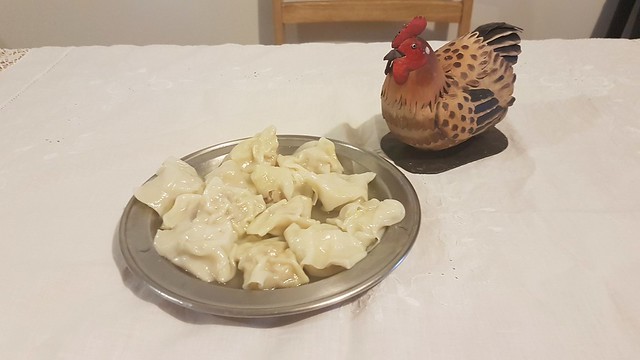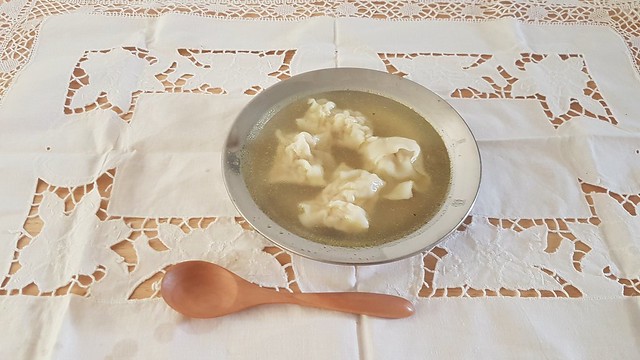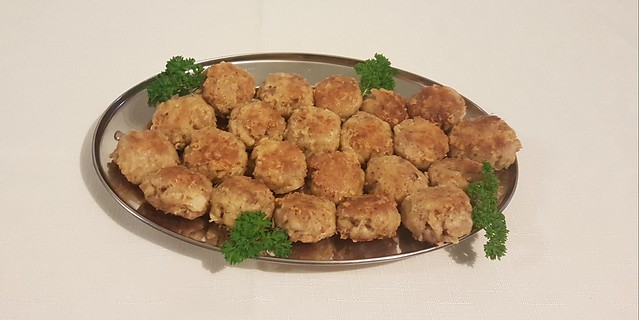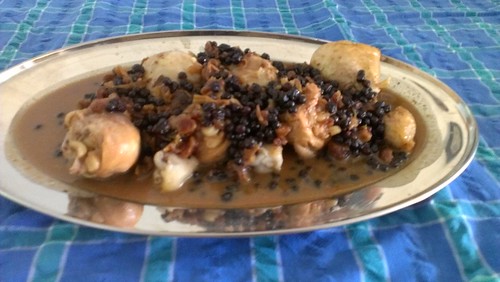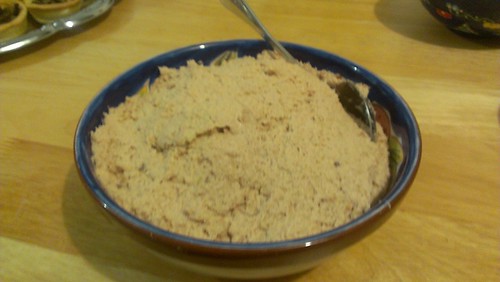Veal, Kid, or young Capon Torte
Take whichever of the meats listed above that you wish, boiling them first, and making sure that the meat is lean and fatty; and once you have removed every nerve, finely chop with a knife; then crush slightly in a mortar; and take some fresh cheese, and little bit of good aged cheese; likewise a little parsley and marjoram, finely chopping the one and the other, and ten or fifteen eggs with a pork belly or veal udder that has been well boiled and very finely chopped, adding a bit of pepper, some ginger, some cinnamon, some saffron, and cook the same way you would a white torte.White Torte
… Then make the dough or rather crust in a pan, suitably thin, and cook very slowly, applying heat from below and above; and be sure that it is browned on top by the heat; and when it seems to be done, remove from the pan … Maestro Martino of Como, The
This was a recipe I made up while developing a recipe for Maestro Martino’s Capon Torte. I was hampered by the use of “torte” (in modern terms a sweet, layered cake) for a recipe that was clearly a tart or pie. I also thought the Maestro specifying 15 eggs was a bit ridiculous. In this version I made the Maestro’s recipe into a chicken pie; after doing some further research I came to the conclusion it was a tart rather than a pie (that is no pastry lid), and furthermore the 15 eggs are not ridiculous; but this recipe was so tasty I’ve kept it anyway.
If you’re interested, the final recipe for the Capon Torte can be found here.
Ingredients
| 1 quantity shortcrust pastry | 100g pork belly or speck | 1/2 tsp pepper |
| 350g skinned chicken meat | 3 large eggs | 1/2 tsp ginger |
| 100g ricotta cheese | 2 tbs chopped parsley | 1/4 tsp cinnamon |
| 25g grated parmesan cheese | 2 tsp chopped marjoram | 1/4 tsp saffron |
Method
- Put the chicken into a pot of cold water and bring to a simmer. Cook until the chicken has turned white and is fairly firm to the touch – it should still have some give.
- Allow the chicken to cool slightly and chop into fine pieces.
- If the skin is still on the pork belly, remove it, and finely slice the pork belly, including the fat.
- Put the pork belly pieces into a pot of cold water and bring to a simmer. Cook until the pork meat has changed colour and the fat has started to dissolve. Drain and allow to cool slightly.
- Put all the filling ingredients in a bowl, and mix. It’s easiest to do this with your hands – just get them in there and smoosh.
- Divide the pastry into two pieces, one larger than the other (you want the larger piece to be approximately 2/3 of the pastry). Roll out the larger piece of pastry to approx. 3mm thickness and line a greased 20cm pie plate with it.
- Dock the bottom of the pastry and pour in the filling.
- Roll out the smaller piece of pastry to form the lid. Brush the edges of the pie with beaten egg or milk, and then lay the lid on top. Press the edges firmly to seal, then cut a cross into the lid of the pie to allow steam to escape. If desired, brush the lid of the pie with beaten egg or milk.
- Put into a preheated 200°C oven and bake for around 345 minutes, or until the pastry has gone golden and started to pull away from the pie plate.
- Serve the pie hot or cold.
Notes
- Even in the medieval period, Parmesan cheese was a coveted luxury. It was probably first exported from Italy in C14, and was prized throughout Europe. The relative dryness and higher salt content of a good parmesan cheese makes it easy to transport long distances without spoiling (Kindstedt, 2012, 155-157). If you are uncertain about using Parmesan in this recipe, you could substitute a milder cheese, such as Gouda or Edam.
- There are no recipes for pastry in Maestro Martino’s book. The recipe I used is adapted from an English recipe that’s roughly contemporary to Maestro Martino (click on the link for more information).
- Part cooking the meat ensures the filling will be cooked when the pastry is done. It may seem weird to not just chop the chicken and the pork together; however chicken is easier to cut when it’s wholly or partially cooked rather than raw, and pork belly, because of the fat, is much easier to cut raw.
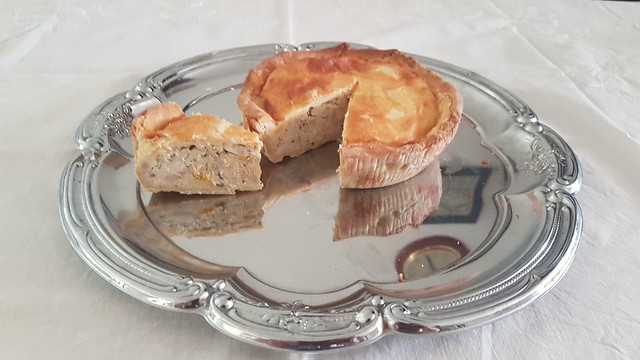
Further Reading
Click on the links below to buy direct from The Book Depository.
Bach, Volker (2016). The Kitchen, Food and Cooking in Reformation Germany.
Kindstedt, Paul (2012). Cheese and Culture.
Martino, Maestro of Como (2005). The Art of Cooking: The First Modern Cookery Book, trans. Jeremy Parzen.
Scappi, Bartolomeo (2008). The Opera of Bartolomeo Scappi (1570), trans. Terence Scully.

